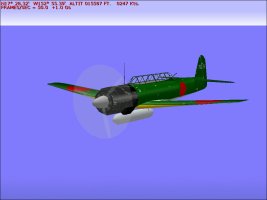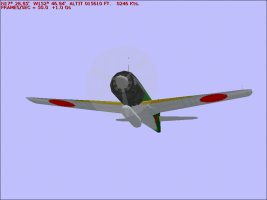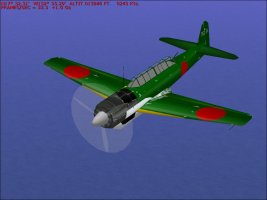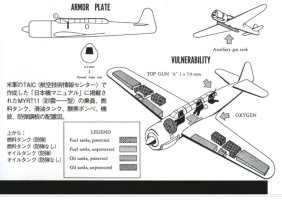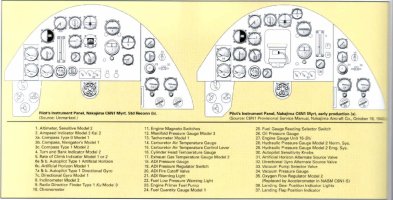I had entered most of the known parameters for a C6N1 into a CFS AIR file a couple nights ago.
This is a VERY tedious task because about 90% of the records are affected in one way or another.
The first test flight showed that the "New" AIR file was giving only about 980 HP at 5000 Feet.
Yes, I ran the first test at 5000 Feet because that was not too far from the low speed supercharger peak horsepower.
Obviously this was not even close.
I had started with a pretty reasonable P&W R-2800 from a previous project and just modified the geometry.
This is an interesting topic worthy of note.
The R-2800 engine actually displaces 2804 Cubic Inches and generates around 2000 HP at Sea Level running at 2700 RPM.
The Ha-45 Homare displaces around 2160 Cubic Inches and generates around 1980 HP at Sea Level running at 3000 RPM.
It also does this with substantially less manifold pressure. We may get into a description as to why this is possible later.
Last night after posting here, I worked on tuning various engine parameters to get closer to the proper performance.
Keep in mind that before doing this, I had already pulled useful pieces from several other AIR files I had done in the past.
I had not planned on doing a proper "Ivan's Propeller Factory" type of propeller for this project but the Propeller Power Coefficient is so close to that of the Ki-61-Id that I just lifted the propeller tables from that aircraft. They may need slight modification but there is nothing obviously wrong yet.
The existing fuel tanks were discarded and fuel tanks from my P-38J Lightning were installed. No problems encountered there.
I ran into a minor issue with Propeller Animation and pulled some data from one of the FW 190D AIR files I had done. It wasn't directly useable but with some slight modifications, everything worked.
As usual, the first step was to get Sea Level power (500 Feet) more or less correct.
I was trying for a Take-Off power output (+500 mm) 49.6 inches Hg of just under 1950 HP
The Rated power (+350 mm) 43.7 inches Hg was whatever it was going to be.
Power at 500 Feet
Take-Off 1923 HP
Rated 1653 HP
Keep in mind that this is the typical military engine and we are trying to simulate a Two Speed supercharger with a CFS AIR file which really is simulating a single speed supercharger. There will be mismatches in power, especially in intermediate altitudes.
Here is a coarse table of HP versus Altitude.
There is no point in taking smaller altitude steps when just doing basic tuning.
The interest is at 6000 Meters (19685 Feet) and the most likely power / speed peak below that.
Altitude Rated Power Take-Off Power
500 Feet 1653 HP 1923 HP
5000 Feet 1718 1997
10000 Feet 1795 2085
15000 Feet 1878 HP No Supercharger Capacity for Take-Off Power
17500 Feet 1708 HP No Supercharger Capacity for Take-Off Power
Note that in an actual engine, the power output at 10,000 Feet and 15,000 Feet are too high.
Low Blower has run out of capacity and High Blower has not reached its peak power yet.
Unfortunately, that is not how CFS works, so we have to live with it.
Speed at 15,000 Feet is 384 MPH
Speed at 17,500 Feet is 376 MPH
This is definitely in the correct range. I got a bit tired and quit testing after this.
There needs to be more testing at 19,000 Feet and 20,000 Feet and perhaps some minor adjustments depending on results.
- Ivan.

